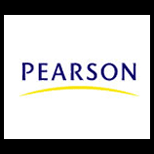
Concept explainers
1.
Periodic Inventory System: It is a system in which the inventory is updated in the accounting records on a periodic basis such as at the end of each month, quarter or year. In other words, it is an accounting method which is used to determine the amount of inventory at the end of each accounting period.
In First-in-First-Out method, the cost of initial purchased items are sold first. The value of the ending inventory consists the recent purchased items.
To Calculate: The ending merchandise, cost of goods sold, and gross profit using FIFO inventory costing method.
2.
In Last-in-First-Out method, the cost of last purchased items are sold first. The value of the closing stock consists the initial purchased items.
To Calculate: The ending merchandise, cost of goods sold, and gross profit using LIFO inventory costing method.
3.
In Average Cost Method the cost of inventory is priced at the average rate of the goods available for sale. Following is the mathematical representation:
To Calculate: The ending merchandise, cost of goods sold, and gross profit using weighted average inventory costing method.
Want to see the full answer?
Check out a sample textbook solution
Chapter 6 Solutions
ACC 201/202 MYACCLAB E-TEXT ONLY >I<
- Can you solve this general accounting problem using accurate calculation methods?arrow_forwardCould you explain the steps for solving this financial accounting question accurately?arrow_forwardFinancial Accounting Question: A new common stock issue that paid a $1.77 dividend last year. The par value of the stock is $15, and the firm's dividends per share have grown at a rate of 7.8% per year. The growth rate is expected to continue in the foreseeable future. The price of this stock is now 27.33. The cost of common equity for the firm is %. Answer: 14.78%arrow_forward
 Financial AccountingAccountingISBN:9781305088436Author:Carl Warren, Jim Reeve, Jonathan DuchacPublisher:Cengage Learning
Financial AccountingAccountingISBN:9781305088436Author:Carl Warren, Jim Reeve, Jonathan DuchacPublisher:Cengage Learning Financial AccountingAccountingISBN:9781337272124Author:Carl Warren, James M. Reeve, Jonathan DuchacPublisher:Cengage LearningPrinciples of Accounting Volume 1AccountingISBN:9781947172685Author:OpenStaxPublisher:OpenStax College
Financial AccountingAccountingISBN:9781337272124Author:Carl Warren, James M. Reeve, Jonathan DuchacPublisher:Cengage LearningPrinciples of Accounting Volume 1AccountingISBN:9781947172685Author:OpenStaxPublisher:OpenStax College Cornerstones of Financial AccountingAccountingISBN:9781337690881Author:Jay Rich, Jeff JonesPublisher:Cengage Learning
Cornerstones of Financial AccountingAccountingISBN:9781337690881Author:Jay Rich, Jeff JonesPublisher:Cengage Learning Intermediate Accounting: Reporting And AnalysisAccountingISBN:9781337788281Author:James M. Wahlen, Jefferson P. Jones, Donald PagachPublisher:Cengage Learning
Intermediate Accounting: Reporting And AnalysisAccountingISBN:9781337788281Author:James M. Wahlen, Jefferson P. Jones, Donald PagachPublisher:Cengage Learning Financial And Managerial AccountingAccountingISBN:9781337902663Author:WARREN, Carl S.Publisher:Cengage Learning,
Financial And Managerial AccountingAccountingISBN:9781337902663Author:WARREN, Carl S.Publisher:Cengage Learning,





